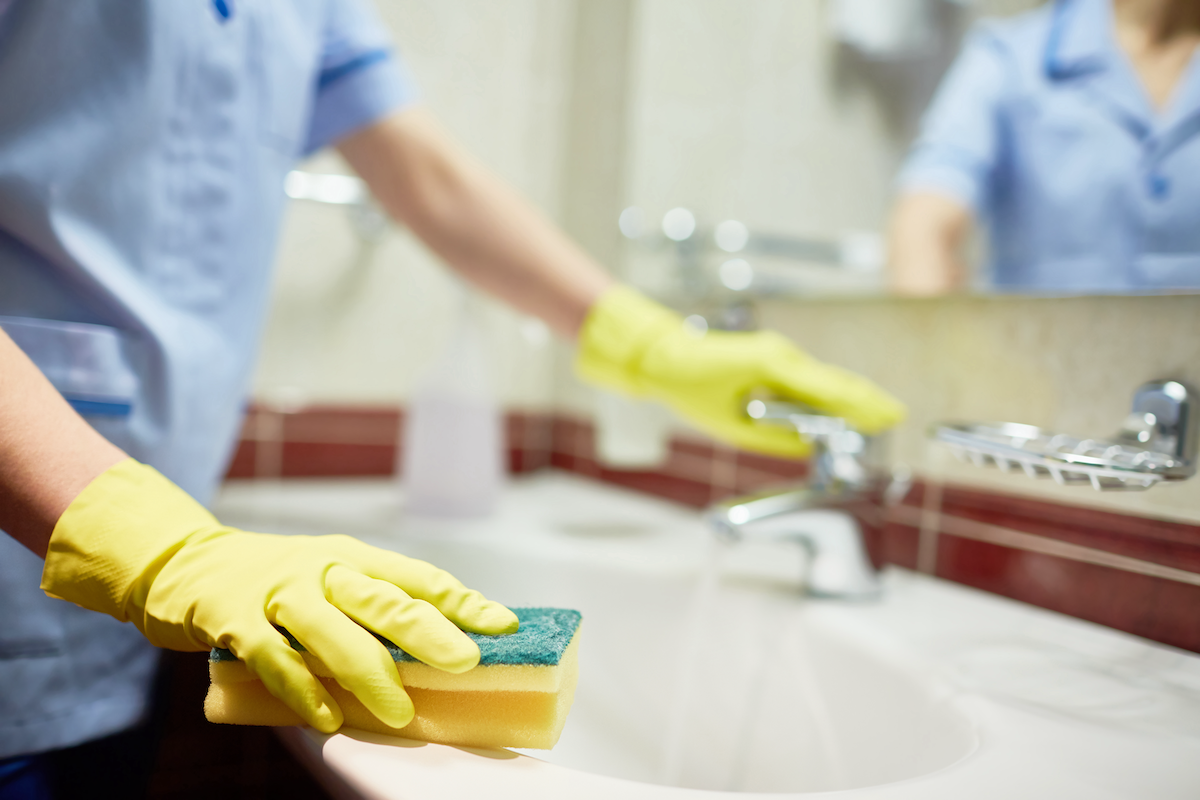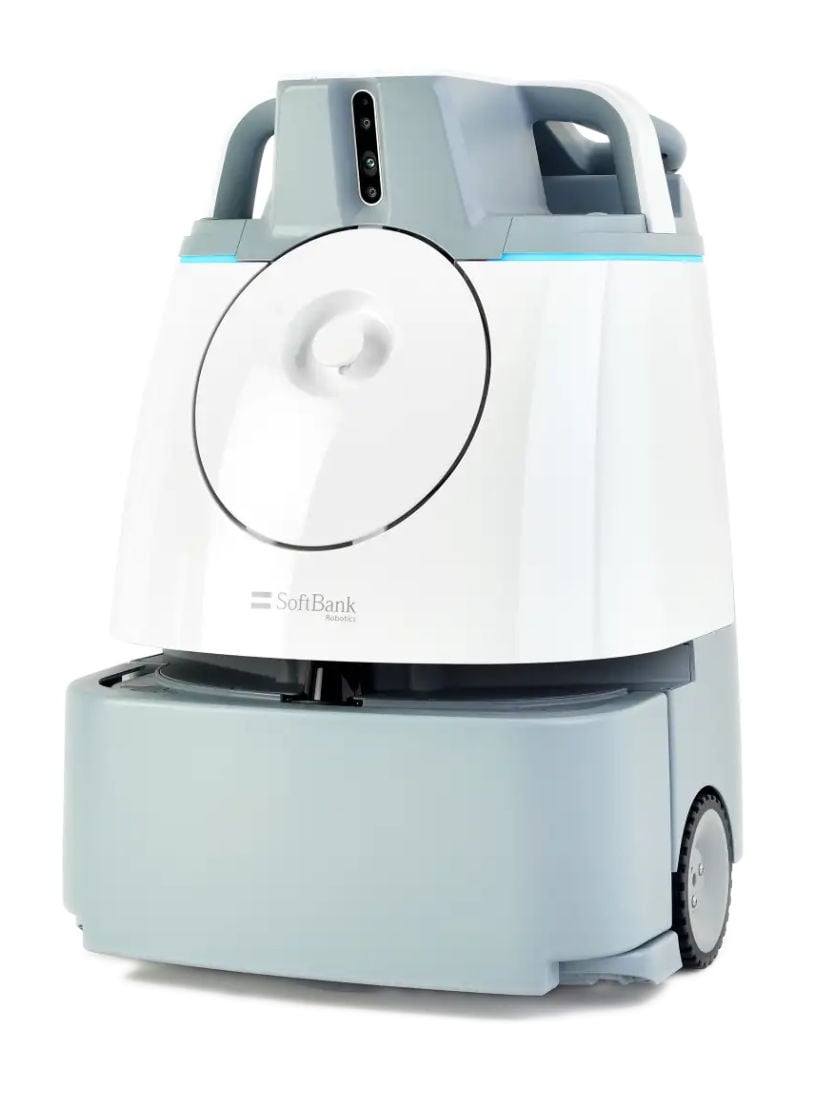The lobby is a hotel’s face to the world—and also a highly trafficked area that can accumulate dirt and grime at an astonishing rate. Below, we explore why maintaining a clean lobby is so important, the most critical steps to keeping a clean lobby, and how automated cleaning solutions can help.
Why Keeping a Clean Hotel Lobby Matters
Hotels must strive to maintain clean, sanitary, and welcoming spaces throughout their facilities, and no area is more important than the lobby. The lobby makes a critical first impression on guests, and the cleanliness of the lobby can play a key role in determining guests’ overall impression of the hotel's quality. By maintaining a detail-oriented, well-staffed process for cleaning the hotel lobby, a hotel is investing in putting its best foot forward every time a guest enters or leaves the hotel.
A hotel lobby often offers not only seating areas but also complimentary food and beverage stations, bathrooms, garbage containers, and other amenities. This means keeping up with the variety, frequency, and unpredictability of all the tasks needed to ensure a positive guest experience in the lobby can be a genuine operational challenge.
We created this guide to help.
How To Clean Your Lobby Area in Eight Steps
As the eight steps below demonstrate, an effective hotel lobby cleaning process needs to be comprehensive, covering everything from restocking snacks to sanitizing door knobs. Across all of these important cleaning responsibilities, cleaning staff face the challenge of keeping up with time-consuming, repetitive tasks like mopping while tracking other issues—like spills, full garbage bins, or dirty bathrooms—that may require urgent attention at a moment's notice. In this context, automation and other trending hospitality technologies can play a valuable role, helping keep up with simple chores while freeing up staff to focus on the detailed work needed to ensure the most positive possible guest experience.
Step 1: Sweep and Mop the Hard Flooring
From tile to wood, sweeping and mopping hard flooring is a constant requirement for keeping lobby areas clean. In high-traffic areas, both may be necessary multiple times per day. Keeping your floors clean may mean accelerating your schedule depending on foot traffic and weather (like muddy conditions during a rainy day). The sweeping and mopping schedule may also need to be modified for more frequent cleaning of the most highly trafficked areas.
A regular mopping schedule is important for keeping up with the day-to-day build-up of dirt and grime, while cleaning staff must also remain vigilant for spills and other messes that require immediate mopping attention. Vigilant mopping is not only important for cleanliness but safety: immediate spot cleaning helps minimize the risk of falls on slippery spilled liquids.
The Scrubber 50 Pro is an example of an automated, robotic floor scrubber that can provide exceptional value in high-traffic areas like hotel lobbies. Powered by AI, the Scrubber 50 Pro is designed to work in close proximity with cleaning staff and guests, with integrated sensors supporting real-time obstacle avoidance. By providing continuous mopping, scrubbing, and dusting along pre-programmed routes, the Scrubber 50 Pro can help keep a clean lobby while freeing up cleaning staff for other lobby maintenance tasks.
Step 2: Vacuum the Carpets
Just like hard surfaces, carpeted areas in highly trafficked hotel lobbies accumulate dirt and dust every time a guest walks through, and multiple vacuuming circuits daily may be necessary to maintain a clean and presentable lobby. Mats and rugs also need to be incorporated into the vacuuming schedule. In addition to vacuuming, occasional professional carpet cleaning services may be required to achieve a deeper clean and help ensure that no odors, discoloration, or other issues emerge over time.
Vacuuming is another key area where automation is an ideal solution for keeping up with the need for continuous cleaning. For example, Whiz, the commercial robot vacuum, is an autonomous cleaning solution that helps hotel owners manage the constant upkeep required in lobbies and other shared spaces. In addition to creating more balanced housekeeping workloads, Whiz allows your staff to prioritize higher-impact cleaning and operations tasks.
Step 3: Dust Surfaces, Furniture, and Decorations
Lobby decorations can continuously accumulate dust, and may be difficult to access for cleaning, requiring detailed attention from cleaning staff. Meanwhile, heavily-used lobby furniture and other surfaces can quickly accumulate dirt, stains, and other messes. Regular wipe downs may be necessary multiple times per day, while more thorough cleanings should be scheduled regularly.
Cleaning staff must take care to track manufacturers' recommended cleaning solutions to avoid damaging furniture materials. Other common areas that need to be integrated with regular dusting or cleaning procedures include kick plates, window ledges, reception areas, and baggage carts.
Step 4: Clean the Bathrooms
Restrooms adjacent to hotel lobbies often experience a large amount of traffic compared to bathrooms throughout the rest of the hotel, and they may require much more frequent cleanings. A poorly kept bathroom can make the worst possible first impression on a new guest, and continuous attention from hotel cleaning staff is of the utmost importance to ensure an elevated guest experience.
Keeping a clean bathroom requires attention to mopping floors, cleaning toilets, sinks, and other surfaces, freshening the air, stocking supplies, and emptying garbage.
Step 5: Sanitize Doors Knobs, Handles, and Other High-Contact Surfaces
Keeping high-touch surfaces sanitized has always been an important part of hotel cleanliness, and this concern will only be more front of mind for customers in the wake of COVID. Continuous sanitation can help eliminate germs while showing customers that the hotel is taking the necessary precautions to discourage the spread of pathogens.
Step 6: Take Out the Garbage
Keeping up with the garbage needs of the lobby means both regularly emptying trash and recycling bins and ensuring that refuse left elsewhere in the lobby makes its way to the appropriate receptacle.
Collecting and disposing of garbage as promptly as possible is the best way to prevent the build-up of odors, avoid attracting pests, and keep the lobby area tidy. After taking out the trash, the application of a surface cleaner to surrounding areas (in addition to an air freshener) can be helpful for eliminating any lingering smells.
Step 7: Tidy and Restock Complimentary Food and Beverage Stations
From warm cookies, to cool drinks, to salty snacks, complimentary food and beverage stations can help guests feel at home. But an empty snack container, messy beverage station, or dry pitcher puts this warm welcome at risk.
Staff should check the status of food and beverage stations at regular intervals, be ready to clear and service them at guests’ request, and regularly check for any nearby crumbs, spills, or other messes. If a timely refill isn’t available, putting up appropriate signage (ie. “Refill coming soon” or “Snacks to be Replenished Each Day at 9 AM and 6 PM”) can help minimize the impact on guests’ lobby experience.
Step 8: Clean the Windows
Clean windows play a particularly important role in the lobby, as they can make an impression on both guests relaxing or waiting in the lobby area and passers-by on the outside of the hotel. Nothing ruins a beautiful view from a hotel lobby widow like a smudge, handprint, or streak.
Low-lying windows and glass doors, especially in areas that will be commonly handled by guests, must be frequently cleaned to prevent the build-up of smudges. If the lobby features any higher or otherwise difficult-to-reach windows, specialized window cleaners and equipment may be necessary.
Learn More About Solving Hotel Cleaning Challenges
As the many different steps outlined above demonstrate, keeping a busy hotel lobby clean and welcoming is no easy task. But as many hotels across the world show us every day, a dedicated cleaning staff with the right tools and procedures can not only keep these areas clean but maintain them as relaxing respites amidst a busy work and travel schedule.
Investing in the right technologies can make all the difference when it comes to keeping up with the myriad tasks required for maintaining a clean lobby. For example, one Hilton Garden Inn overcame these challenges by integrating the Whiz autonomous vacuum sweeper to work alongside its cleaning staff. The result? Over 10+ hours of weekly vacuum labor automated, freeing up staff work for more skilled, detail-oriented responsibilities.
[Learn More About This Hilton Hotel’s Cleaning Success Story Here]








